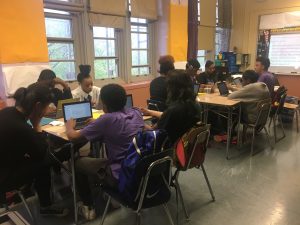
16 May Blended Learning: What is All of the Hype About?
What’s not to like about blended learning? The traditional face-to-face instruction that incorporates the use of an online platform with resources for students to complete and submit their work. This pathway for teaching, not only develops skills in preparation for college and career readiness, but targets individualized learning based on each students competency levels. Sounds like an educators answer differentiation that seems perfect! Right?
Advantages of Blended Learning:
- Learning is not restricted to a school building.
- Closing the digital divide
- Learning is customized and based on competency
- Increased engagement by students
Disadvantages of Blended Learning:
- Cost of technology
- Continuos Professional development
- Finding staff who will be invested
- Planning time
Considering the advantages and disadvantages of blended learning, I believe it can transform the learning experience for children, but there are three key components to ensure its success: teacher’s willingness, professional development, and technology capacity.
- Teacher’s Willingness: In order for blended learning to work, finding the staff members who share a belief and buy-in that this instructional practice will be beneficial to students. Time will be of the essence when it comes to planning, implementing, and monitor progress to make modifications as needed throughout instruction. Because blended learning is not one size fit all model, it requires flexibility and active engagement from both the teacher and student to determine the impact of teaching and progress in learning.
- Professional Development: Blended learning requires a shift in mindset to a new instructional practice, learning the skill set students require within the classroom, differentiated instruction, evaluating resources, and an analysis of data. Therefore, time must be invested in learning through on and off-site training that will be essential for the success of this learning model. In addition, there must be a connection to a community of educators that can offer support, share best practices, and offer opportunities for school visitations to see model classrooms in action.
- Technology Capacity: The most important component of the blended learning model is not only technology, but also a funding source that will be available for additional supplies, storage space, replacement of equipment, and tech support. Whether it’s the use of tablets or laptops, having access to technology for students to update and submit their work for feedback and evaluation purposes will be essential.

Blended learning, may be the latest hype in education, but like most instructional practices it can be a success in any classroom, it first begins with the belief, followed by the plan, and then the implementation that will transform the learning experience for our children.

